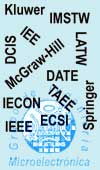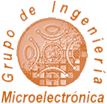
Mapa Web

Localización

Noticias

Info Santander

Gestión BD

|
| GIM>Investigación>Publicación |
| PUBLICACION |
| |
| Ficha completa |
| Título: | Automatic vector generation guided by a functional metric |
| Tipo: | Publicacion en Proceedings o Actas internacionales |
| Lugar: | SPIE Microtechnologies |
| Fecha: | 2011-04 |
| Autores: |
Iñigo Ugarte
Pablo Pedro Sánchez
|
| Líneas: |
|
| Proyectos: |
|
| ISBN: | 9780-8194-8659-2 |
| Fichero: |
|
| Resumen: | Verification is still the bottleneck of the complex digital system design process. Formal techniques have advanced in their capacity to handle more complex descriptions, but they still suffer from problems of memory or time explosion. Simulation-based techniques handle descriptions of any size or complexity, but the efficiency of these techniques is reduced with the increase in the system complexity because of the exponential increase in the number of simulation tests necessary to maintain the coverage. Semi-formal techniques combine the advantages of simulation and formal techniques as they increase the efficiency of simulation-based verification. In this area, several research works have introduced techniques that automate the generation of vectors driven by traditional coverage metrics. However, these techniques do not ensure the detection of 100% of faults. This paper presents a novel technique for the generation of vectors. A major benefit of the technique is the more efficient generation of test-benches than when using techniques based on structural metrics. The technique introduced is more efficient since it relies on a novel coverage metric, which is more directly correlated to functional faults than structural coverage metrics (line, branch, etc.). The proposed coverage metric is based on an abstraction of the system as a set of polynomials where all system behaviours are described by a set of coefficients. By assuming a finite precision of coefficients and a maximum degree of polynomials, all the system behaviors, including both the correct and the incorrect ones, can be modeled. This technique applies mathematical theories (computer algebra and number theory) to calculate the coverage and to generate vectors which maximize coverage. Moreover, in this work, a tool which implements the technique has been developed. This tool takes a C-based system description and provides the coverage and the generated vectors as output. |
|
|








